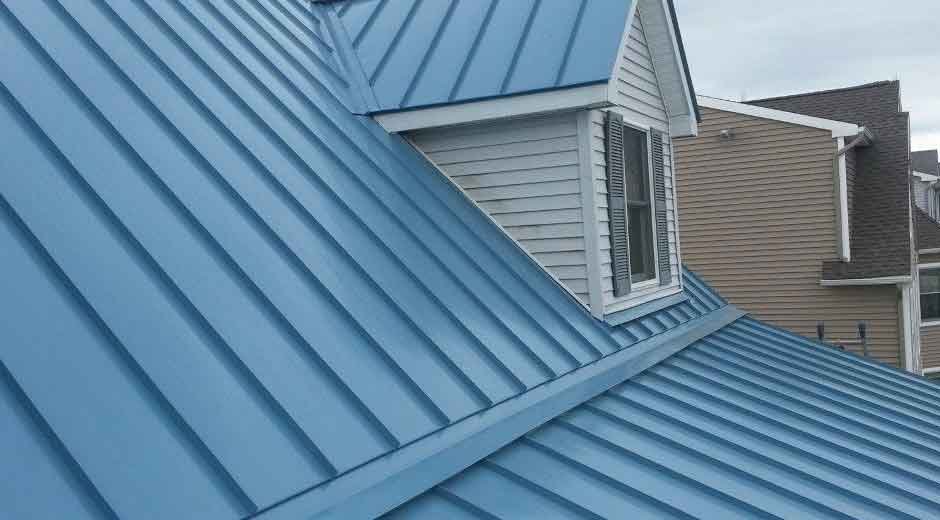Metal roofing systems have gained significant popularity among homeowners seeking energy-efficient solutions. These roofing materials offer distinct advantages over traditional asphalt shingles and other conventional options. Modern metal roofs feature advanced technologies that reduce energy consumption throughout all seasons. Energy costs continue rising, making efficient roofing systems increasingly valuable for residential properties.
Metal roofing with high energy efficiency provides substantial savings on heating and cooling expenses. Homeowners benefit from reduced utility bills while contributing to environmental conservation efforts. Below, you read about the specific mechanisms that make metal roofing systems exceptionally efficient.
Reflective Properties of Metal Roofing Materials
Metal roofing surfaces reflect solar radiation more effectively than traditional materials. Light-colored metal roofs can reflect up to 70% of solar heat, significantly reducing thermal absorption. This reflection prevents excessive heat buildup in attic spaces during the summer months. The reflective coating applied to metal roofing enhances these natural properties.
Special pigments and finishes increase solar reflectance while maintaining aesthetic appeal. Different metal types offer varying levels of reflectivity, with aluminum and steel leading in performance. Surface texture also influences reflective capabilities. Smooth metal surfaces generally reflect more heat than textured alternatives.
Thermal Mass Benefits and Heat Distribution
Metal roofing systems possess low thermal mass compared to materials like concrete or clay tiles. This characteristic allows rapid temperature changes without prolonged heat retention. Metal roofs cool quickly after sunset, reducing nighttime heat transfer into living spaces. The lightweight nature of metal contributes to faster thermal response times.
Traditional heavy materials store heat during the day and release it slowly at night. Metal roofing avoids this thermal lag, maintaining more consistent indoor temperatures. Proper installation techniques enhance thermal performance through strategic air gap placement. Ventilation spaces between metal panels and underlying structures create insulation barriers.
Insulation Integration and Ventilation Systems
Metal roofing works exceptionally well with various insulation materials and ventilation designs. Rigid foam insulation boards can be installed directly beneath metal panels for enhanced thermal resistance. Reflective insulation barriers add another layer of energy protection. Ventilation systems become more effective when paired with metal roofing materials.
Ridge vents, soffit vents, and exhaust fans work together to remove hot air from attic spaces. Metal roofing supports these ventilation systems without compromising structural integrity. Proper insulation installation prevents thermal bridging through metal components.
Seasonal Energy Performance Advantages
Summer cooling benefits represent the most obvious advantage of metal roofing systems. Reduced heat absorption means air conditioning systems work less frequently and consume less electricity. Interior temperatures remain more stable throughout hot weather periods. Winter heating efficiency also improves with metal roofing installations.
Snow slides off metal surfaces more easily, preventing ice dam formation that can compromise insulation effectiveness. Metal roofs maintain their shape and sealing properties in cold temperatures. Spring and fall weather changes affect metal roofing less dramatically than other materials.
Environmental and Economic Impact Factors
Metal roofing contributes to reduced carbon footprints through lower energy consumption. Decreased electricity usage means fewer fossil fuel emissions from power generation facilities. Recycled metal content in roofing materials further enhances environmental benefits. Long-term cost savings often offset higher initial installation expenses. Metal roofing with high energy efficiency can reduce cooling costs by 10-25% annually.
These savings accumulate over the 40-70-year lifespan of quality metal roofing systems. Property values typically increase with energy-efficient roofing installations. Metal roofing systems also require less maintenance than traditional materials, reducing ongoing expenses.
Metal roofing systems deliver exceptional energy efficiency through multiple mechanisms working together. Reflective properties reduce heat absorption, while low thermal mass prevents heat retention. Proper insulation integration and ventilation design enhance these natural advantages. Professional installation ensures optimal performance and maximum efficiency gains from metal roofing systems.









